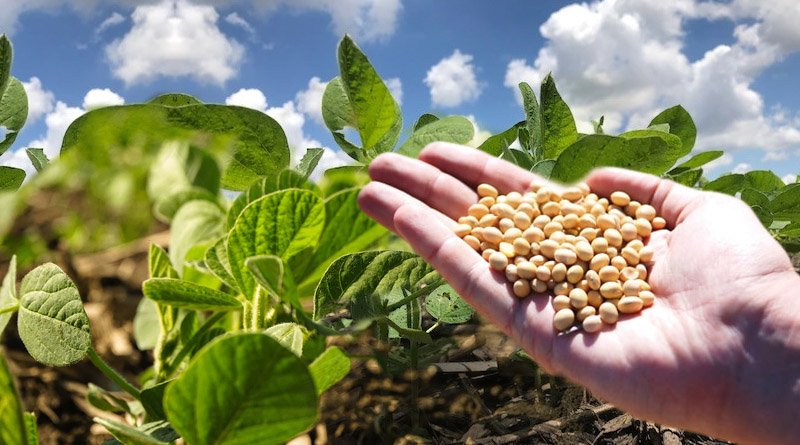Soybeans grown in Brazil and several other parts of the world are used to obtain oil, protein, and other by-products necessary to meet human and animal demand.

Normal soybean plant development, like any other growth performance, is clearly a matter of proper nutrition. The soybean plant’s production of root nodules and its use of nitrogen from the atmosphere to enable the crop to serve as a protein-producing and nitrogen-fixing factory on the farm are primarily determined by the level of nutrition or fertility of the soil.
Soybeans grown in Brazil and several other parts of the world are used to obtain oil, protein, and other by-products necessary to meet human and animal demand. For this, soil management practises must be carried out to meet the requirements of plants at different stages of development, especially during seed production, which directly reflects its chemical composition.
Of the 14 chemical elements needed to build plants, 11 must be supplied by the soil in the case of legumes. One fewer, or 10, are required by legumes from the soil. Legumes, like non-legumes, use carbon, hydrogen, and oxygen supplied by air and water.
In addition, and quite unlike legumes, they can take up a fourth nutrient—nitrogen—from the air, provided they work in cooperation with the right bacteria on their roots, normally supplied as inoculations.

Inoculation or introduction of nodule bacteria with soybean seeding is not necessarily a practise that will force the plant to accept the bacteria.
The latter cannot use caveman tactics. Rather, the plant and bacteria will only unite in their efforts to obtain the necessary nitrogen from the gaseous stores in the atmosphere when the soil provides enough of all the nutrients required by both the plant and the bacteria.
Successful soybean growth on soils with declining fertility cannot be guaranteed simply by introducing certain lineage microbes.
The plant that serves as a nitrogen-fixing factory must first be healthy because it is well nourished with calcium, phosphorus, magnesium, and other soil elements. If it is not well nourished by the soil, the inoculating bacteria will not combine with it to give it that characteristic that is so desirable in legumes, namely, the ability to fix nitrogen.
Inoculation or the introduction of bacteria will not replace the high level of soil fertility required for successful legume cultivation.
Here is an overview of calcium testing by Dr. William Albrecht on soybeans:
- An experimental study of the effect of calcium on the nodulation of soybeans on certain acid soils was carried out with the hope of contributing to the knowledge of the role of calcium in inoculation.
- The divided root system of soybeans, grown in acid soil on the one hand and calcium-treated soil on the other, gave rise to differences in nodule production as great as those produced when the plants were grown entirely on the same soils. This indicates (1) that calcium plays some physiological role in promoting nodulation and (2) that its effects are local or limited in increasing the number of root infections, at least during the periods used in this experiment.
- The addition of calcium carbonate to an acidic soil of pH 5.4 that was already infected with leguminous organisms greatly increased nodule production. It suggests that the effect of liming is not necessarily to keep the bacteria applied as inoculum alive because, in this case, liming increased the number of nodules of organisms originally present in the soil. It is clear that calcium carbonate had a physiological effect on plants and possibly other organisms to induce greater nodule production.
- Adding a small amount of calcium chloride to acidic soil (pH 5.5) increased the viability of the legume organism, Radicicola sojae, applied to the soil in pure cultures and stimulated nodulation of the host plant.
- Calcium taken up by the plant serves as a nitrogen-fixing factory in early growth, as there is a difference in nodulation in 10-day-old calcium-starved and calcium-containing seedlings when transplanted into already well-inoculated calcium-deficient soil of pH 5.4.
- This function of calcium in or through the plant to increase nodulation may have an underlying histological or physiological basis in the plant, since there is a marked difference in the plant cell parallel to the effect on nodulation of calcium by a given seedling. wall structure is indicated by differences in the ease of obtaining microsections of calcium-starved and calcium-supplemented 10-day-old soybean seedlings.